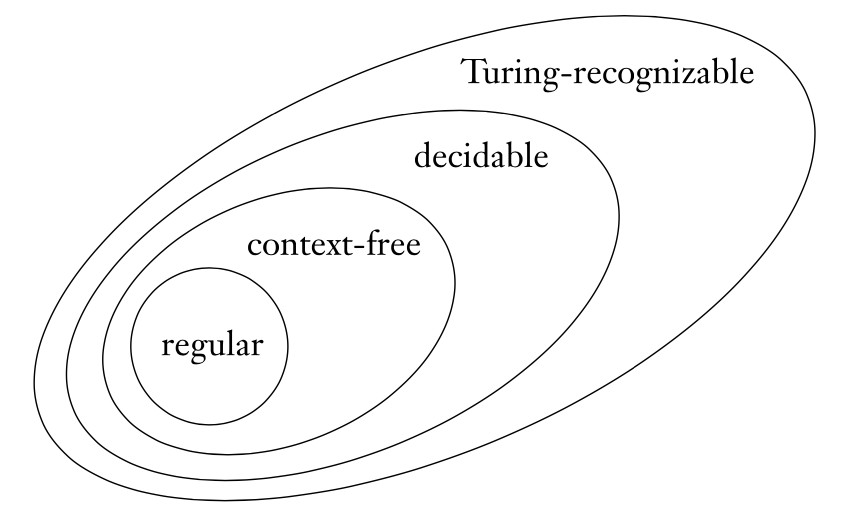Turing Machines
Summarized notes from Introduction to Theory of Computation, Chapter 3
Differ from finite automata in following ways:
-
can read and write on the tape
-
read-write head can move left and right
-
the tape is infinite (unrestricted and unlimited memory access)
-
accepting and rejecting states take effect immediately
-
configuration: { current state, tape symbol, head location }
- can be written as
- can be written as
- evaluation of input has 3 possible outcomes: accept, reject, or loop
- decider machines always halt and either accept or reject
- the language recognized by
- each
Formal Definition
It is not typical to define TM in this level of detail; it is sufficient to describe the operations of the machine or simply the algorithm and trust that the machine can simulate it.
7-tuple
| finite set of states | |
| finite input alphabet (without blank symbol) | |
| finite tape alphabet (includes blank symbol and |
|
| transition function | |
| start state | |
| accept state | |
| reject state |
Recognizers and deciders
Turing-recognizable
A language is Turing-recognizable if some Turing machine recognizes it.
decidable
A language is decidable if some Turing machine decides it.
Notes:
- every decidable language is Turing-recognizable
- recognizers are more powerful than deciders
- if both a language and its complement are Turing-recognizable, the language is decidable
- language is co-Turing-recognizable if it is the complement of a Turing-recognizable language
Relationship between languages

Some variants
The original model and reasonable variants (e.g. finite amount of work/step)
have same computational power. The following are all equivalent to the original model:
| Machine | Description |
|---|---|
| stay | machine does not have to move left or right at each step, can stay in place: |
| multitape | multiple tapes and each tape has own read/write head which move simultaneously, initial input is on tape 1 |
| nondeterministic | at each step the computation may proceed according to several possibilities: |
| enumerator | machine with an attached printer for producing output; the enumerated language is the strings eventually printed by the machine |
Other unequal alternative models:
-
Linear bounded automaton (LBA)
- restricted TM where the head is not allowed to move off the portion of tape containing input; attempt to move outside the tape causes the head to stay
- LBA can decide every CFL; some decidable languages cannot be decided by LBA
-
Oracle Turing machine
- modified Turing machine that has the additional capability of querying an oracle
- oracle is an external device that is capable of reporting whether any string w is a member of language L
- can decide more languages than an ordinary Turing machine can